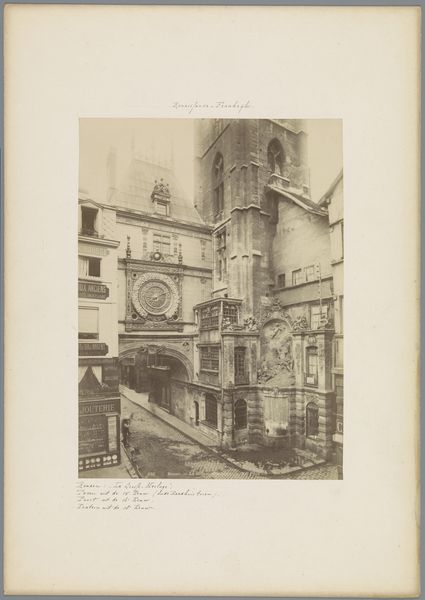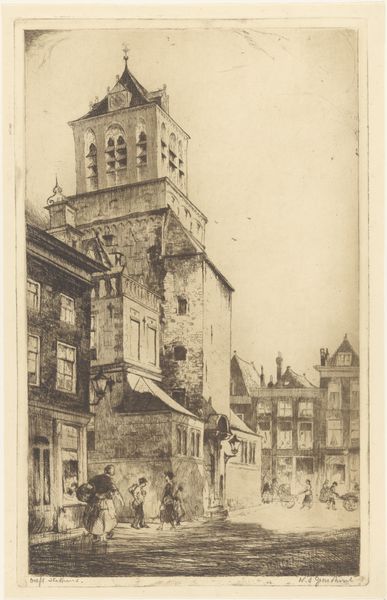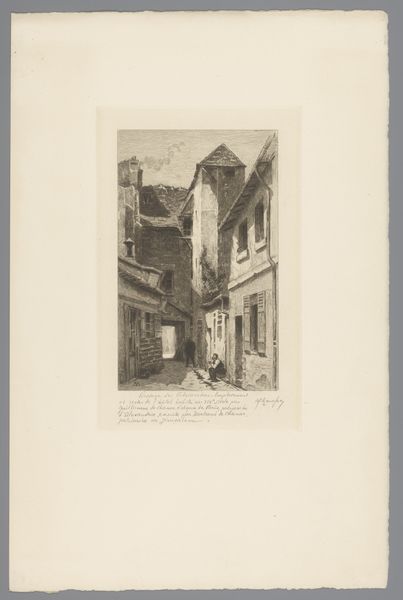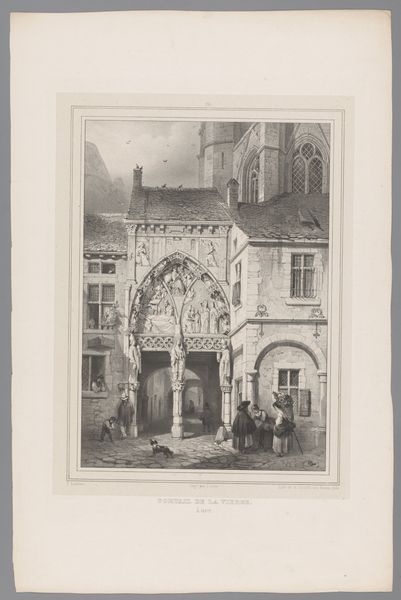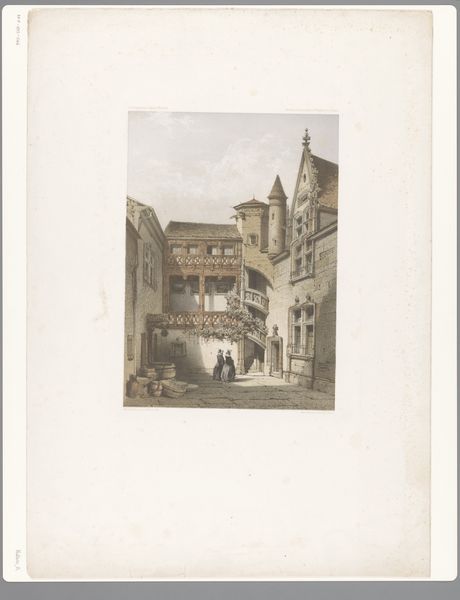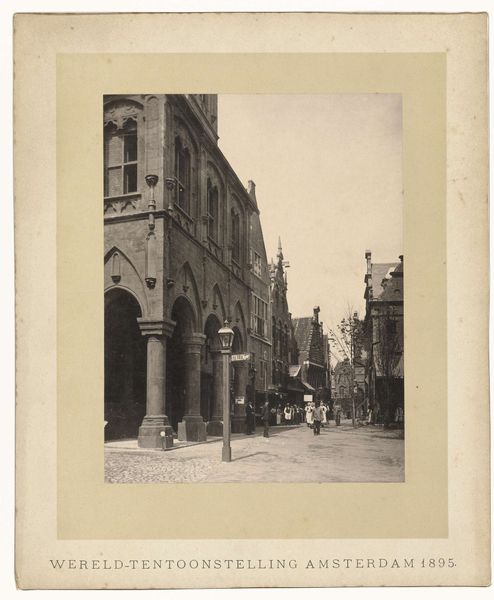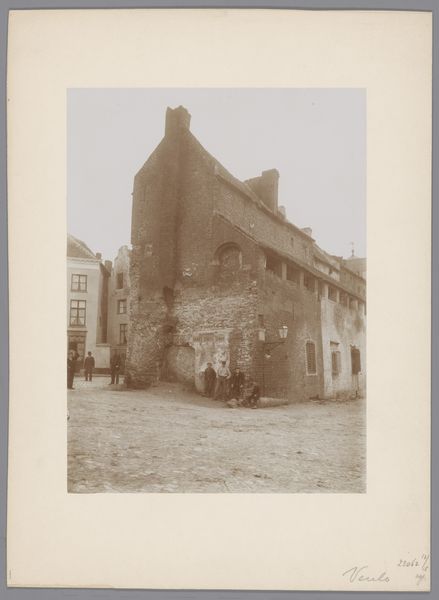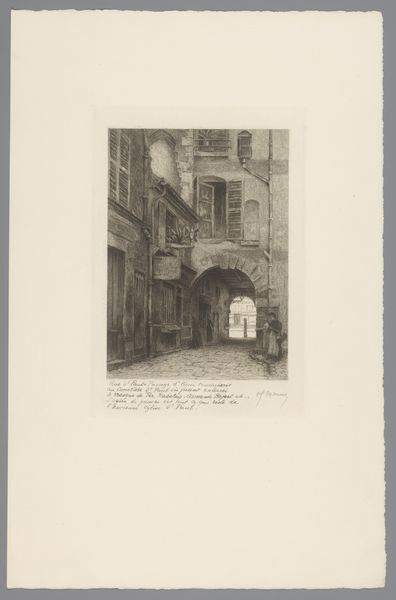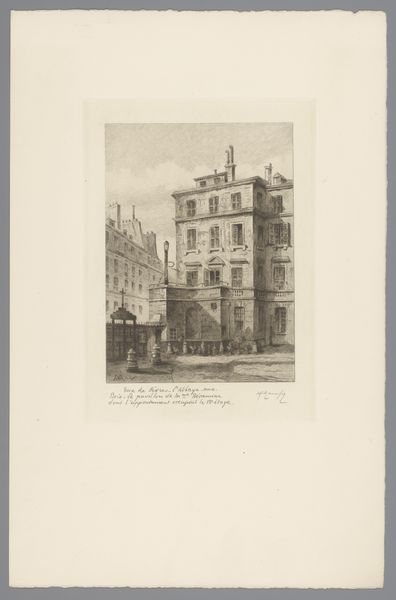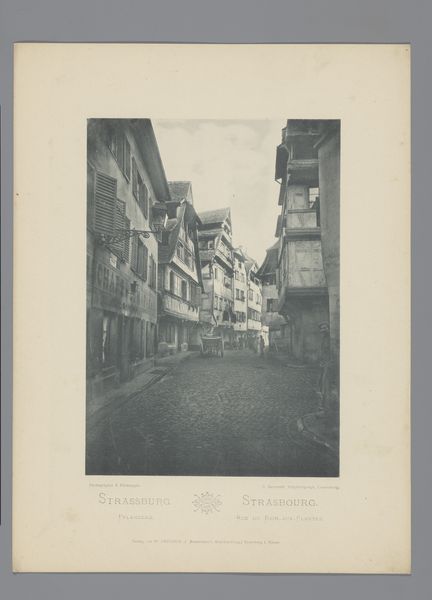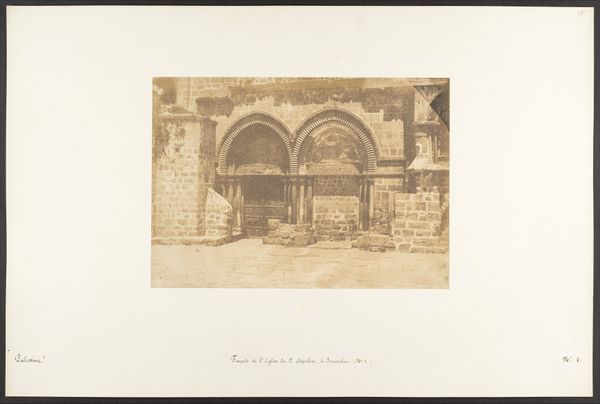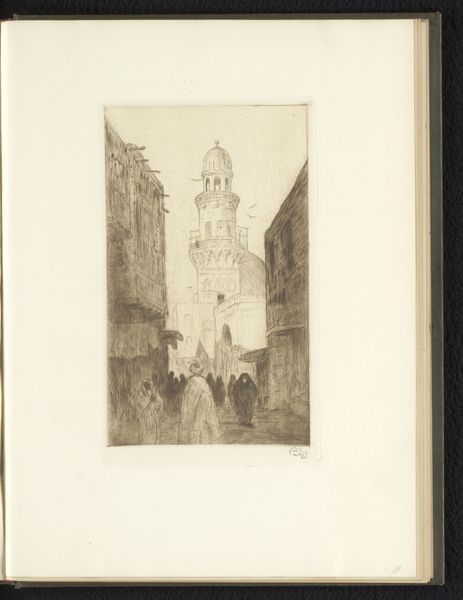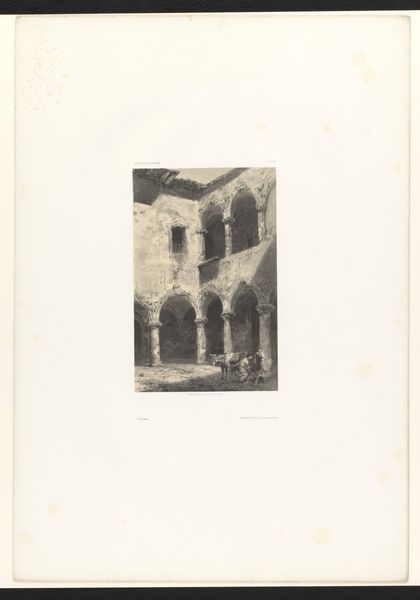
Dimensions: height 400 mm, width 292 mm
Copyright: Rijks Museum: Open Domain
Curator: The delicate lines in Eugène Cicéri's 1854 etching, "Steeg met huizen in de avondschemering," conjure a street scene in twilight. What do you make of it? Editor: There's an immediate sense of quiet solitude. The shadowy alleyway, rendered in monochrome, feels both intimate and slightly melancholic. It pulls you into the lives hinted at behind those closed windows. Curator: Absolutely. Cicéri positions us, the viewers, as outsiders looking in. The choice of etching, with its capacity for fine detail, highlights the architecture – each stone, each window pane seems painstakingly rendered. How do we read this intense focus on detail within the context of 19th century Romanticism? Editor: Well, I'm drawn to consider the burgeoning industrial revolution occurring during the time this piece was rendered, and it seems to function almost as a pushback against industrial standardization. A longing for a pre-industrial past and slower pace of life. This alley offers a snapshot of a contained community before being swallowed up by modernization. I find myself questioning who inhabits this space; are they offered protection or entrapped within this setting? Curator: I agree that social anxieties play a key role here. Genre paintings like this were incredibly popular and I am tempted to apply ideas around class and inequality when considering how the architecture here symbolizes various types of social structures. How might marginalized communities have viewed a place like this, knowing they had no hope of occupying these beautiful spaces? Editor: It's fascinating how a simple cityscape becomes charged with those tensions. The light and shadow become symbolic then: darkness representing the unknown futures. Considering its presence in the Rijksmuseum today, this piece now invites us to critically examine urban planning and accessibility through a much wider, sociopolitical lens. Curator: And with that reading, Cicéri's etching acts as an important document. I'm left thinking about the weight of history imbued in even the most apparently unassuming streets, and how each generation inherits a responsibility to build more inclusive cities. Editor: Ultimately, the etching is more than just a pretty picture of old buildings. It's an invitation to remember and reconsider.
Comments
No comments
Be the first to comment and join the conversation on the ultimate creative platform.
